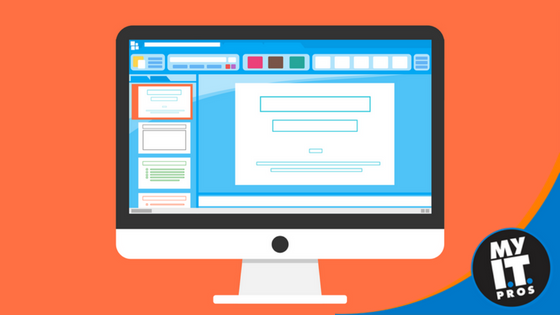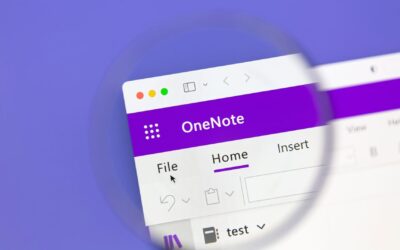
In today’s world of fast-paced commerce, “remote” is practically a new buzzword. In fact, you may even have some team members working remotely as you read this. However, for certain organizations, user mobility is both a blessing and a curse.
While it provides flexibility and convenience, allowing users to work remotely opens up some logistical challenges, particularly in terms of data integrity and security. And in heavily regulated industries—healthcare, finance and so forth—extra security risks are untenable.
Using a remote desktop platform (RDP) combined with a central server and cloud storage allows employees to remotely access a server, desktop or virtual machine, rather than working directly from their computer hard drive. Applications and data are therefore centrally stored, which makes it convenient and simple to add users without intensive software and hardware costs. For certain organizations, this technique can be used to configure thin client workstations—lightweight computers that may be used by multiple team members throughout the day.
Let’s take a look at a few real-life use cases for an RDP setup to help you decide whether an RDP makes sense for your business.
Use case: Healthcare clinic with multiple users at the same workstation
In certain instances, it’s more convenient to allow users to remote into a central server with a remote desktop platform than it is to assign a full workstation to each employee. Think of a doctor’s office or healthcare clinic, for example. In this environment, it may be more practical and safer to set up several computer workstations—a few in reception, one outside patient examination rooms, one at the doctor’s desk—instead of handing everyone laptops.
Using a thin client workstation, a number of different users can log into the same desktop without overlapping. Applications are installed on a shared server, so no data is saved locally. With cloud storage, data backups occur automatically, so users don’t have to remember to save to the cloud. Everyone in the clinic is able to access patient charts, insurance data and other important information, and updates are saved instantly to the server for improved data integrity.
Use case: Library or college campus with public computer stations
Remote desktop platforms also work well when computers are set up for public use, such as at a public library, in a college computer lab or at a copy shop. These environments can use the thin client setup to remote into a shared server on which a variety of applications are installed.
This way, you give customers access to the applications they need without exposing yourself to the risk of them installing malware or other undesirable applications. Again, data can be stored offsite in a cloud storage repository, making it easier to secure your software.
Use case: Multi-location business with satellite offices or workers offsite
Does your business shut down at 5 o’clock? Didn’t think so. These days, it’s fairly typical to have team members working at odd hours or remote staff members who are located miles away from the office. Other businesses may have satellite offices spread throughout the country or even the globe.
Unfortunately, this situation can introduce security risks. Users working from a mobile device may lose their laptops or tablets, or have their devices stolen. Unfortunately, there’s no way for you to ensure they are protecting these devices with appropriate controls, which means that a thief could potentially hack in and steal sensitive data.
There’s also a logistical problem: Unless data is stored in a central location, it may be difficult to collaborate across locations. And if your employees aren’t saving data in your cloud storage repository, a hardware failure could equal hours of lost work.
Using an RDP allows your team to work anywhere while maintaining data integrity. This also lowers the risk of a data breach, since all work is secured with your user’s login credentials. And with backups automatically scheduled in your cloud storage platform, you’ll never have to sweat a hardware snafu.
The bottom line: RDP is safe, convenient and cost-effective
While a remote desktop platform is certainly not suited to every business, it makes a lot of sense in instances such as those discussed above. Even if your work situation wasn’t explicitly mentioned, a remote desktop platform may make sense for you. Let’s quickly review some of the benefits of these platforms for a little more food for thought:
- Cost savings and scalability: RDPs allow you to easily add users and workstations at a low cost. Instead of purchasing expensive laptops or individual software licenses, you can take advantage of lightweight thin client computers and install software on a shared server—an ideal solution for businesses that scale up and down rapidly.
- Convenience: With RDP, there’s no need to assign users to individual workstations, as you’re able to have several users logging on to a station at different times. This works well in offices with active employees who may be moving from room to room throughout the day, or when multiple shifts of workers are using the same computers.
- Data integrity: Using an RDP, shared documents, programs and data are saved to a server or cloud storage repository rather than to local hard drives. Backups can be automated to prevent data loss, which is useful for industries dealing in sensitive data—particularly if you’re relying on legacy applications or industry-compliant enterprise tools that may not support cloud storage.
- Security: There’s always the risk that a laptop or tablet could be stolen or lost. With this in mind, RDPs offer an additional level of data security by storing user data in a central location rather than directly to the hard drive. Moreover, in situations with public workstations, RDPs prevent malware and secure your applications.
- Compliance: In heavily regulated industries such as healthcare, storing all applications and data in a centralized data location allows you to more easily secure your information and prevent the exposure of sensitive data.
Although rolling out RDP may improve a lot of organizational and security issues, this often takes considerable effort—particularly if you’re opting for a thin client configuration. Your business IT support provider should be able to help you install server and remote desktop solutions safely and effectively.
On the hunt for new business IT support? Contact one of our representatives today for a free consultation. We’ll help you take control of your IT configuration!



